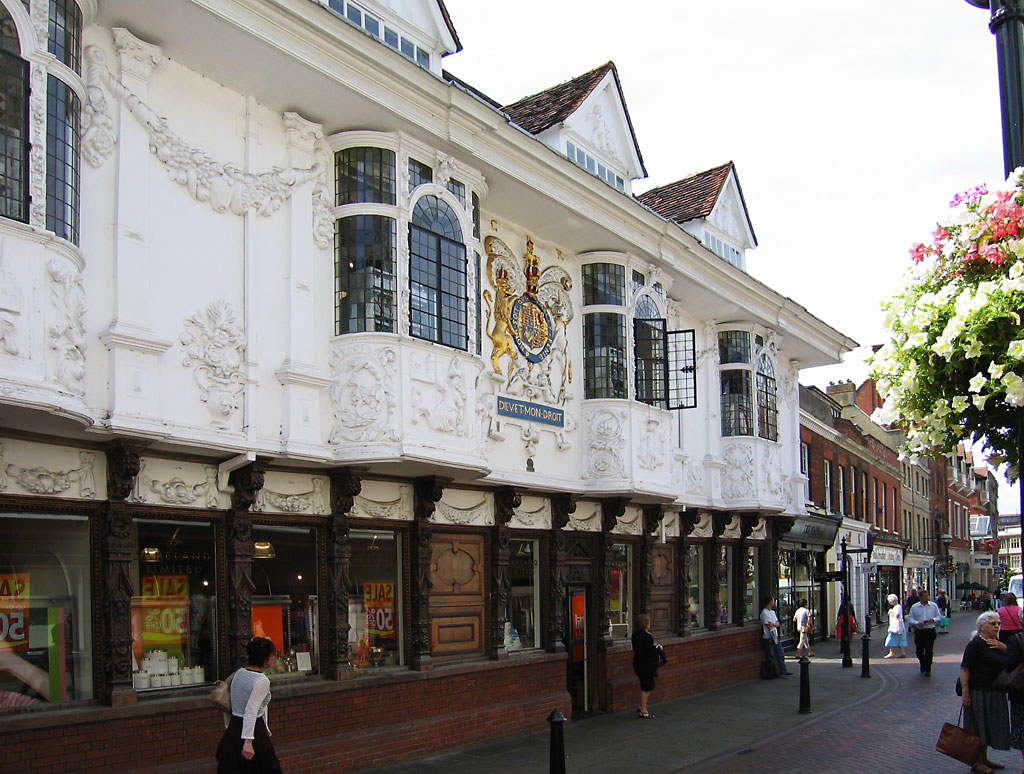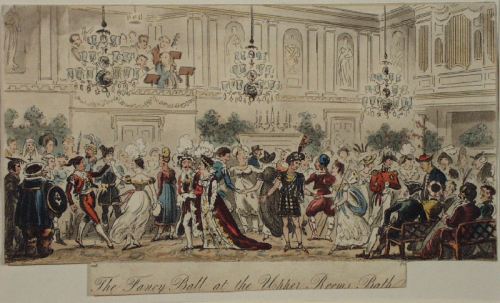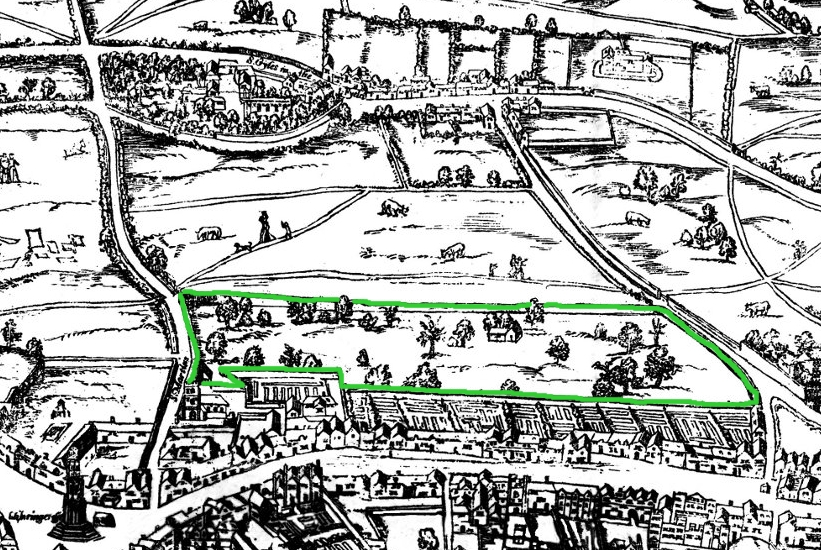|
Benjamin Plim Bellamy
Benjamin Plim Bellamy (1782–1847) was an English actor. Early life He was baptised at St. Mary Magdalene, Bridgnorth, Shropshire on 27 September 1782, son of William and Ann Bellamy. He married Elizabeth Walker at Scarborough, North Yorkshire on 12 October 1806. Acting career For some 30 years was a favourite actor on the Norwich Theatre Circuit. Controversy in Ipswich In 1810 the ''Suffolk Chronicle'' hired a corrosive new critic, up to which time the Norwich Company had been used to receiving a favourable press. For the summer season 1810 the 'Ipswich Theatre' was showing ''She Stoops to Conquer'' and the ''Chronicle'' reported 'The performance possessed all the worst defects of a provincial exhibition' and actor Frederick Vining was rapped for his 'schoolboy recitation' with the managers accused of having dredged up a miserable orchestra. Worse followed when the Chronicle sent the reporter to every following show and the reviews became more critical. After an uneasy truc ... [...More Info...] [...Related Items...] OR: [Wikipedia] [Google] [Baidu] |
Bridgnorth
Bridgnorth is a market town and civil parish in Shropshire, England. The River Severn splits it into High Town and Low Town, the upper town on the right bank and the lower on the left bank of the River Severn. The population at the United Kingdom Census 2011, 2011 Census was 12,079. History Bridgnorth is named after a bridge over the River Severn, which was built further north than an earlier bridge at Quatford. The earliest historical reference to the town is in 895, when it is recorded that the Danes (Germanic tribe), Danes created a camp at ''Cwatbridge''; subsequently in 912, Æthelfleda constructed a mound on the west bank of the River Severn, or possibly on the site of Bridgnorth Castle, as part of an offensive against the Danes. Earliest names for Bridgnorth include Brigge, Brug and Bruges, all referring to its position on the Severn. After the Norman conquest of England, Norman conquest, William the Conqueror, William I granted the manorialism, manor of Bridgnorth to R ... [...More Info...] [...Related Items...] OR: [Wikipedia] [Google] [Baidu] |
Ipswich
Ipswich () is a port town and Borough status in the United Kingdom, borough in Suffolk, England. It is the county town, and largest in Suffolk, followed by Lowestoft and Bury St Edmunds, and the third-largest population centre in East Anglia, after Peterborough and Norwich. It is northeast of London and in 2011 had a population of 144,957. The Ipswich built-up area is the fourth-largest in the East of England and the 42nd-largest in England and Wales. It includes the towns and villages of Kesgrave, Woodbridge, Suffolk, Woodbridge, Bramford and Martlesham Heath. Ipswich was first recorded during the medieval period as ''Gippeswic'', the town has also been recorded as ''Gyppewicus'' and ''Yppswyche''. It has been continuously inhabited since the Anglo-Saxon settlement of Britain, Saxon period, and is believed to be one of the Oldest town in Britain, oldest towns in the United Kingdom.Hills, Catherine"England's Oldest Town" Retrieved 2 August 2015. The settlement was of great eco ... [...More Info...] [...Related Items...] OR: [Wikipedia] [Google] [Baidu] |
1847 Deaths
Events January–March * January 4 – Samuel Colt sells his first revolver pistol to the U.S. government. * January 13 – The Treaty of Cahuenga ends fighting in the Mexican–American War in California. * January 16 – John C. Frémont is appointed Governor of the new California Territory. * January 17 – St. Anthony Hall fraternity is founded at Columbia University, New York City. * January 30 – Yerba Buena, California, is renamed San Francisco. * February 5 – A rescue effort, called the First Relief, leaves Johnson's Ranch to save the ill-fated Donner Party of California-bound migrants who became snowbound in the Sierra Nevada earlier this winter. Some have resorted to survival by cannibalism. * February 22 – Mexican–American War: Battle of Buena Vista – 5,000 American troops under General Zachary Taylor use their superiority in artillery to drive off 15,000 Mexican troops under Antonio López de Santa Anna, defeating the Mexicans the next day. * Fe ... [...More Info...] [...Related Items...] OR: [Wikipedia] [Google] [Baidu] |
1782 Births
Events January–March * January 7 – The first American commercial bank (Bank of North America) opens. * January 15 – Superintendent of Finance Robert Morris (financier), Robert Morris goes before the United States Congress to recommend establishment of a national mint (facility), mint and decimal coinage. * January 23 – The Laird of Johnstone (George Ludovic Houston) invites people to buy marked plots of land which, when built upon, form the planned town of Johnstone, Scotland, to provide employment for his Yarn, thread and cotton mills. * February 5 – The Spanish defeat British forces and Invasion of Minorca (1781), capture Menorca. * February 6 – Singu Min is overthrown as king of Myanmar by his cousin Phaungka Min and 8 days later will be executed by his uncle Bodawpayar. * February 18 – Fourth Anglo-Dutch War: Shirley's Gold Coast expedition lands at Elmina on the Dutch Gold Coast. The British expedition fails to take the for ... [...More Info...] [...Related Items...] OR: [Wikipedia] [Google] [Baidu] |
Bath Abbey Cemetery
The Anglican Bath Abbey Cemetery, officially dedicated as the Cemetery of St Peter and St Paul (the patron saints that Bath Abbey is dedicated to), was laid out by noted cemetery designer and landscape architect John Claudius Loudon (1783–1843) between 1843 and 1844 on a picturesque hillside site overlooking Bath, Somerset, England. The cemetery was consecrated on 30 January 1844. It was a private Anglican cemetery financed by W. J. Broderick, Rector of Bath Abbey. The layout is a mixture of formal and informal arranged along a central avenue. It features a mortuary chapel, designed by Bath City Architect G. P. Manners in the then fashionable Norman Revival architectural style.The Victorian Society: Avon Group, "The Quick and the Dead: A Walk Round Some Bath Cemeteries", 15 September 1979. History The cemetery is on a site that was used for Roman burials, three stone coffins and Roman coins dating to Constantine the Great and Carausius having been found when the roadw ... [...More Info...] [...Related Items...] OR: [Wikipedia] [Google] [Baidu] |
Walcot, Bath
Walcot is a suburb of the city of Bath, in the Bath and North East Somerset district, in the ceremonial county of Somerset, England. It lies to the north-north-east of the city centre, and is an electoral ward of the city.Bath and North East Somerset Council District Council Elections The Paragon and, continuing out of the city, London Road are part of the A4 road. The other main thoroughfare is Walcot Street, which adjoins the city centre and is well known for its artisan shops. Walcot Street and London Road are believe ... [...More Info...] [...Related Items...] OR: [Wikipedia] [Google] [Baidu] |
Bath Assembly Rooms
The Bath Assembly Rooms, designed by John Wood, the Younger in 1769, are a set of assembly rooms located in the heart of the World Heritage Site, World Heritage City of Bath, Somerset, Bath in England which are now open to the public as a visitor attraction. They are designated as a Grade I Listed building (United Kingdom), listed building. During the Georgian era Bath became fashionable, and the architects John Wood, the Elder, and his son laid out new areas of housing for residents and visitors. Assembly rooms had been built early in the 18th century, but a new venue for Ball (dance), balls, concerts and gambling was envisaged in the area between Queen Square (Bath), Queen Square, The Circus, Bath, The Circus and the Royal Crescent. Robert Adam submitted a proposal that was rejected as too expensive. John Wood, the Younger raised funding through a tontine, and construction started in 1769. The new or upper assembly rooms opened with a grand ball in 1771 and became the hub of fa ... [...More Info...] [...Related Items...] OR: [Wikipedia] [Google] [Baidu] |
Bath, Somerset
Bath (Received Pronunciation, RP: , ) is a city in Somerset, England, known for and named after its Roman Baths (Bath), Roman-built baths. At the 2021 census, the population was 94,092. Bath is in the valley of the River Avon, Bristol, River Avon, west of London and southeast of Bristol. The city became a UNESCO World Heritage Site in 1987, and was later added to the transnational World Heritage Site known as the "Great Spa Towns of Europe" in 2021. Bath is also the largest city and settlement in Somerset. The city became a spa with the Latin name ' ("the waters of Sulis") 60 AD when the Romans built Roman Baths (Bath), baths and a temple in the valley of the River Avon, although List of geothermal springs in the United Kingdom, hot springs were known even before then. Bath Abbey was founded in the 7th century and became a religious centre; the building was rebuilt in the 12th and 16th centuries. In the 17th century, claims were made for the curative properties of water ... [...More Info...] [...Related Items...] OR: [Wikipedia] [Google] [Baidu] |
Covent Garden
Covent Garden is a district in London, on the eastern fringes of the West End, between St Martin's Lane and Drury Lane. It is associated with the former fruit-and-vegetable market in the central square, now a popular shopping and tourist site, and with the Royal Opera House, itself known as "Covent Garden". The district is divided by the main thoroughfare of Long Acre, north of which is given over to independent shops centred on Neal's Yard and Seven Dials, while the south contains the central square with its street performers and most of the historical buildings, theatres and entertainment facilities, including the London Transport Museum and the Theatre Royal, Drury Lane. The area was fields until briefly settled in the 7th century when it became the heart of the Anglo-Saxon trading town of Lundenwic, then abandoned at the end of the 9th century after which it returned to fields. By 1200 part of it had been walled off by the Abbot of Westminster Abbey for use as arabl ... [...More Info...] [...Related Items...] OR: [Wikipedia] [Google] [Baidu] |
Hamlet
''The Tragedy of Hamlet, Prince of Denmark'', often shortened to ''Hamlet'' (), is a Shakespearean tragedy, tragedy written by William Shakespeare sometime between 1599 and 1601. It is Shakespeare's longest play. Set in Denmark, the play (theatre), play depicts Prince Hamlet and his attempts to exact revenge against his uncle, King Claudius, Claudius, who has murdered Ghost (Hamlet), Hamlet's father in order to seize his throne and marry Gertrude (Hamlet), Hamlet's mother. ''Hamlet'' is considered among the "most powerful and influential tragedies in the English language", with a story capable of "seemingly endless retelling and adaptation by others." It is widely considered one of the greatest plays of all time. Three different early versions of the play are extant: the Hamlet Q1, First Quarto (Q1, 1603); the Second Quarto (Q2, 1604); and the First Folio (F1, 1623). Each version includes lines and passages missing from the others. Many works have been pointed to as possible s ... [...More Info...] [...Related Items...] OR: [Wikipedia] [Google] [Baidu] |
Shropshire
Shropshire (; abbreviated SalopAlso used officially as the name of the county from 1974–1980. The demonym for inhabitants of the county "Salopian" derives from this name.) is a Ceremonial counties of England, ceremonial county in the West Midlands (region), West Midlands of England, on the England–Wales border, border with Wales. It is bordered by Cheshire to the north-east, Staffordshire to the east, Worcestershire to the south-east, Herefordshire to the south, and the Welsh principal areas of Powys and Wrexham County Borough, Wrexham to the west and north-west respectively. The largest settlement is Telford, while Shrewsbury is the county town. The county has an area of and a population of 498,073. Telford in the east and Shrewsbury in the centre are the largest towns. Shropshire is otherwise rural, and contains market towns such as Oswestry in the north-west, Market Drayton in the north-east, Bridgnorth in the south-east, and Ludlow in the south. For Local government i ... [...More Info...] [...Related Items...] OR: [Wikipedia] [Google] [Baidu] |
Polonius
Polonius is a character in William Shakespeare's play ''Hamlet''. He is the chief counsellor of the play's ultimate villain, Claudius, and the father of Laertes and Ophelia. Generally regarded as wrong in every judgment he makes over the course of the play, Polonius is described by William Hazlitt as a "sincere" father, but also "a busy-body, hois accordingly officious, garrulous, and impertinent". In Act II, Hamlet refers to Polonius as a "tedious old fool" and taunts him as a latter day " Jephtha". Polonius connives with Claudius to spy on Hamlet. Hamlet unknowingly kills Polonius, provoking Ophelia's descent into madness, ultimately resulting in her (probable) suicide and the climax of the play: a duel between Laertes and Hamlet. Character Father of Ophelia and Laertes, and counsellor to King Claudius, he is described as a windbag by some and a rambler of wisdom by others. It has also been suggested that he only acts like a "foolish prating knave" to keep his position ... [...More Info...] [...Related Items...] OR: [Wikipedia] [Google] [Baidu] |








